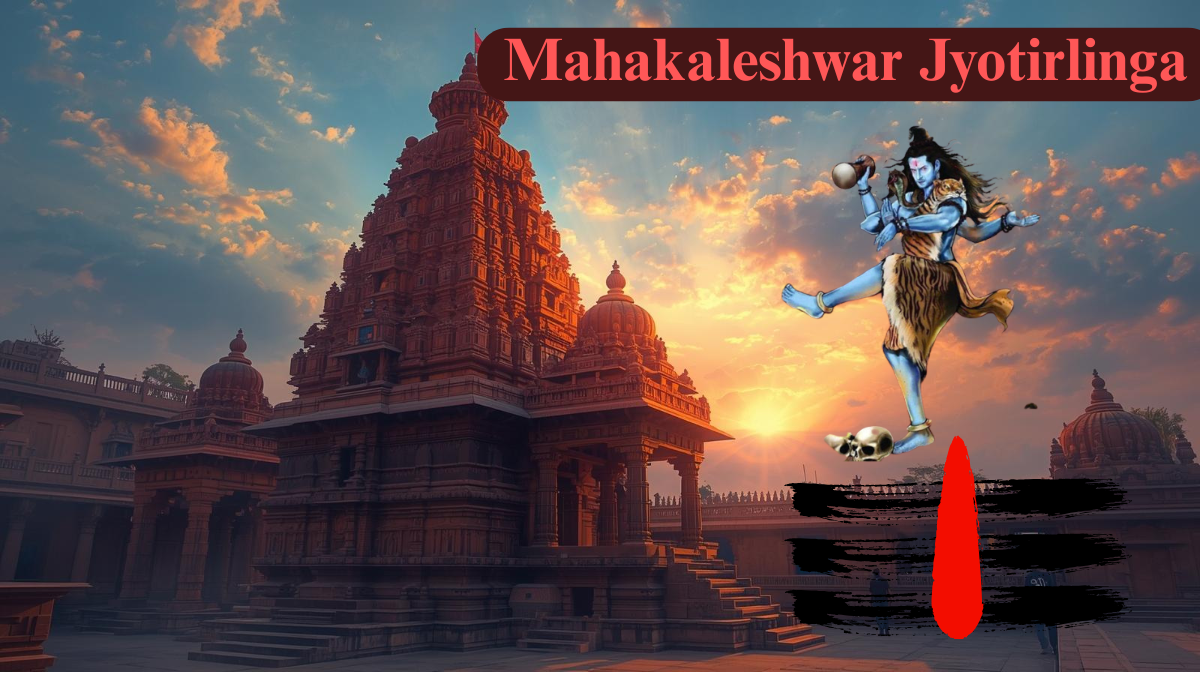Imagine walking into a temple where the air itself vibrates with chants of “Har Har Mahadev.” A place where Lord Shiva resides not just as an idol but in his fierce and self-manifested (Swayambhu) form. Welcome to Mahakaleshwar Jyotirlinga, located in Ujjain, Madhya Pradesh—one of the twelve sacred Jyotirlingas of India.
This temple isn’t just a site of worship; it’s an eternal flame of faith, devotion, and mysticism. The specialty? Unlike the other 12 Jyotirlingas, Mahakaleshwar is the only Dakshinamurti (south-facing) Jyotirlinga, making it spiritually unique.
The Legend of Mahakaleshwar Jyotirlinga
Every temple has a tale, but the legend of Mahakaleshwar is one dipped in power and divine protection.
According to the Shiv Puran, a demon named Dushan terrorized the city of Ujjain and its people. The helpless devotees prayed to Lord Shiva, who appeared in a fiery form and destroyed the demon. From this blazing light emerged the Swayambhu Shivlinga, establishing Lord Shiva as Mahakaal—the ruler of time and death.
Even today, devotees believe that worshiping here frees them from the fear of untimely death and grants moksha (liberation).
Unique Features of Mahakaleshwar Temple
So, what makes Mahakaleshwar different from other Jyotirlingas? Let’s dive into its specialties:
Swayambhu Lingam—Unlike most Shivlings that are consecrated, the Mahakaleshwar Lingam is self-manifested.
Dakshinamurti Form—It is the only Jyotirlinga facing south, symbolizing Shiva as the destroyer of death.
Multi-Level Sanctums—The temple has three levels of lingams: Mahakaleshwar (lower), Omkareshwar (middle), and Nagchandreshwar (upper). Interestingly, Nagchandreshwar is open only on Nag Panchami once a year.
Sacred River Kshipra—Flowing nearby, it enhances the temple’s spiritual significance.
The Mystical Bhasma Aarti—An Experience of a Lifetime
If there’s one ritual you cannot miss, it’s the Bhasma Aarti.
Every morning before sunrise, the temple performs this unique aarti where the lingam is worshipped with sacred ash (bhasma), symbolizing the cycle of life and death. Earlier, this ash was brought from cremation grounds, though today, specially prepared holy ash is used.
The sight is breathtaking—imagine priests chanting mantras, the fragrance of incense in the air, the glow of oil lamps, and Lord Shiva adorned in holy ash. Pilgrims say this moment feels like watching the universe dissolve and be reborn in front of your eyes.
Tip: Entry to the Bhasma Aarti is limited and requires advance online booking.
Festivals at Mahakaleshwar Temple
The temple comes alive during major festivals, each carrying deep cultural and devotional meaning:
Maha Shivratri—The biggest celebration, with thousands of devotees chanting and fasting through the night.
Shravan Maas (July–August) – Considered most auspicious for Shiva worship, the temple is heavily decorated.
Nag Panchami—A rare chance to visit the Nagchandreshwar shrine on the temple’s upper floor.
During these times, Ujjain transforms into a spiritual carnival filled with music, devotion, and colors.
Architecture & Grandeur of the Temple
Built in the Paramara dynasty era and later renovated by the Marathas and Scindias, Mahakaleshwar Temple is a blend of Rajput and Maratha architectural styles.
Intricately carved pillars
Majestic spires (shikharas)
Sculptures depicting tales from Hindu scriptures
A large courtyard surrounded by smaller shrines
The temple stands as much a marvel of devotion as it is of architecture.
Travel Guide – How to Reach Mahakaleshwar Jyotirlinga
Getting to Ujjain is quite easy, thanks to its central location in Madhya Pradesh.
By Air: The nearest airport is Indore Airport (55 km), which is well connected to major cities like Delhi, Mumbai, and Bangalore.
By Train: Ujjain Junction is a major railway station connected to most Indian cities.
By Road: Ujjain has excellent bus connectivity from Indore, Bhopal, and other nearby towns.
Local Tip: If you’re staying in Indore, you can do a same-day visit to Mahakaleshwar, though staying overnight in Ujjain gives you more time to explore.
Darshan Timings & Best Time to Visit
Temple Timings: 4:00 AM – 11:00 PM daily
Bhasma Aarti: Starts around 4:00 AM (entry from 2:30 AM)
Best Time to Visit: October to March (pleasant weather)
Avoid Peak Summer: April–June can be very hot in Madhya Pradesh.
Nearby Attractions in Ujjain
While Mahakaleshwar is the highlight, Ujjain offers several other sacred spots worth visiting:
Kal Bhairav Temple—Dedicated to Shiva’s fierce form, where devotees offer liquor as prasad.
Ram Ghat—A sacred ghat on the Kshipra River, famous for evening aartis.
Harsiddhi Temple—One of the Shakti Peethas, closely linked with Goddess Parvati.
Sandipani Ashram—The place where Lord Krishna and Sudama received their education.
These sites make Ujjain a complete spiritual circuit for travelers.
Tips for Pilgrims & Travelers
Book Bhasma Aarti online in advance to avoid last-minute disappointment.
Carry light cotton clothes if visiting in summer, and warm woolens for winter mornings.
Respect temple rules—photography inside the sanctum is prohibited.
If possible, plan your trip during Maha Shivratri or Shravan Maas for a grand experience.
Conclusion – Where Time Bows Before Mahakaal
The Mahakaleshwar Jyotirlinga isn’t just a temple; it’s an encounter with eternity. Standing before Lord Shiva here feels like time itself has stopped, and you’re face-to-face with the infinite.
Whether you are a pilgrim seeking liberation, a devotee wanting blessings, or a traveler in search of cultural richness, Ujjain’s Mahakaleshwar will leave you with goosebumps, peace, and a story you’ll carry for life.
Discover more from Bhuchi's World
Subscribe to get the latest posts sent to your email.

